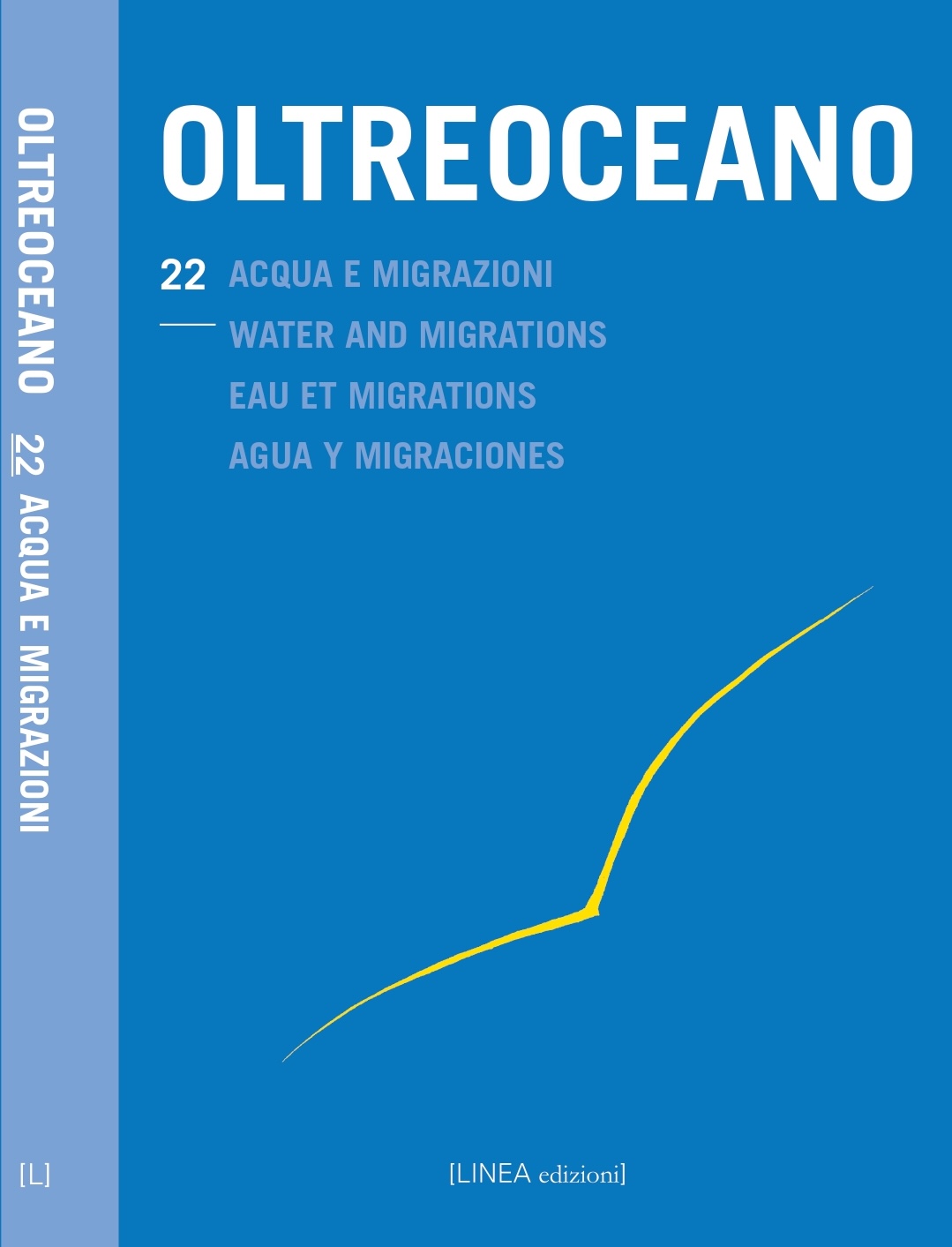Shipwrecks, storms and tears: the dysphoric vision of faith in Catherine de Saint-Augustin
DOI:
https://doi.org/10.53154/Oltreoceano84Keywords:
New France, Women's Writing, Autobiographical Writing, Catherine of Sain-Augustine, Aquatic MetaphorAbstract
This article aims to investigate the use of the ‘aquatic metaphor’ within what is considered to be the first Vie written in New France. La Vie de la mère Catherine de Saint-Augustin was in fact published by Father Paul Ragueneau, the nun’s spiritual director, in 1671 following her death. Although it is an autobiographical writing at its infancy, the work undoubtedly presents some interesting features from a narrative and linguistic point of view. Through the study carried out by Gaston Bachelard in his essay L’eau et les rêves (1942), an attempt will be made to emphasise and give meaning to the woman’s all-round use of the water element. In particular, the latter is exploited by the nun to express her inner state. After her arrival on the new continent on 19 August 1648, the hospitalière’s writings are strongly influenced by the Atlantic crossing during which her existence seems to oscillate between life and death. In fact, the ship and the storm are at the centre of numerous metaphors used to describe difficult conditions or moments in which Catherine finds herself suspended between two contrasting situations. As a highly symbolic element in the Christian liturgy, holy water is also one of the symbols adopted by the nun as an instrument of purification from evil and on which she relies in times of need. Thus, it becomes the means by which God is able to protect the faithful from the demonic visions that torment her. We will then see how, even in Hell, water acquires a highly symbolic meaning as the perfect expression of the union of opposites. Finally, we will give space to tears and weeping. The latter is the main element through which the young woman expresses her sorrow, but, depending on the circumstances, it is also a medium to invoke divine intercession. Therefore, water becomes a powerful symbol that is linked to its surroundings, allowing those who use it to build their own image but also to come into closer contact with the spiritual entity.
Downloads
References
Bachelard, G. (1941): L’eau et les rêves. Essai sur l’imagination de la matière. Paris: Librairie José Corti (Édition numérique réalisée en 2016 à Chicoutimi, Québec).
Boucher, G. (1979): Dieu et Satan dans la vie de Catherine de Saint Augustin, (1632-1668). Montréal: Bellarmin-Desclée.
Casgrain, H.-R (1878) : Histoire de l’Hôtel-Dieu de Québec, Québec: Léger Brousseau.
Cron, A. & Lignereux, C. (2007): De la lisibilité des larmes. Littératures classiques, 62, 1, pp. 5-20.
Ferraro, A. (2018): Gli scritti dei missionari in Nouvelle-France: un cambiamento di paradigma. Oltreoceano, 14, pp. 17–27.
Groulx, L. (1953): Une petite Québécoise devant l'histoire (Mère Catherine de Saint-Augustin). Québec: G.-E. Grandbois
Leberruyer, P. (1989): Hospitalière, missionnaire, mystique: la bienheureuse Catherine de Saint-Augustin. Caen: Don Bosco.
Le Gall J. & Brian I. (1999): La Contre-Réforme à la française (1560-1720). Dans: J. Le Gall & I. Brian (Dir), La vie religieuse en France: XVIe-XVIIIe siècle. Paris: Armand Colin, pp. 75-88.
Œuvres de Pascal, Discours sur la vie et les ouvrages de Pascal, tome 1er, p. 43-44, La Haye, 1779.
Oury, G. M. (1985): L’itinéraire mystique de Catherine de Saint-Augustin. Chambray-lès-Tours: C.L.D.
Ragueneau, P. (1923): La Vie de la mère Catherine de Saint-Augustin, religieuse hospitalière de la Miséricorde de Québec en la Nouvelle-France. Québec: Imprimerie de l’Action sociale limitée (Réédition de l’ouvrage original publié en 1671 chez Florentin Lambert à Paris).
Downloads
Published
How to Cite
Issue
Section
License

This work is licensed under a Creative Commons Attribution-NonCommercial-ShareAlike 4.0 International License.
The authors undertake to comply with the following conditions, which are considered accepted at the time of submission of their contributions.
The sending of a text implies that it is unpublished and not submitted to be published elsewhere.
1. If accepted, the author shall confer on the publisher the right to publish and distribute it both in paper form and in the online electronic edition. The published articles will be downloadable and made available in open access.
2. Provided that it correctly indicates that the first publication took place in the journal Oltreoceano. Rivista sulle migrazioni the author has the right to: a) reproduce the article in separate extracts or collected in a volume; b) publish the article on their personal website or teaching site provided that these sites are of a non-commercial nature; c) deposit the article in online archives of a non-commercial nature, linked to the institution they belong to or as part of projects for the non-commercial dissemination and open access of scientific works.
The use of contributions by third parties, for commercial or otherwise unauthorized purposes, is not allowed. The publisher declines all responsibility for the unauthorized use of the material published in the journal.












